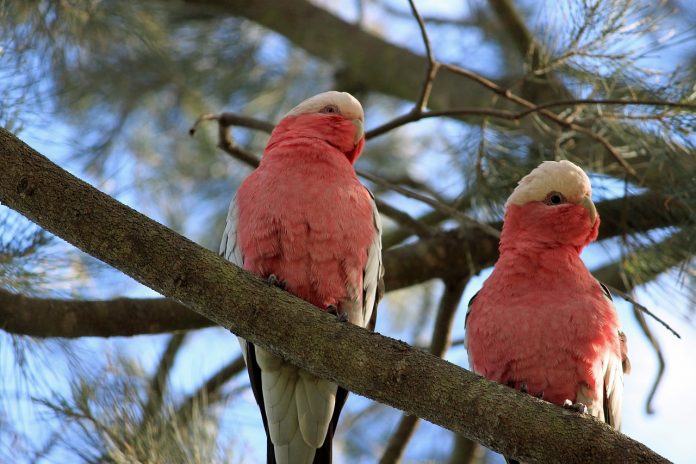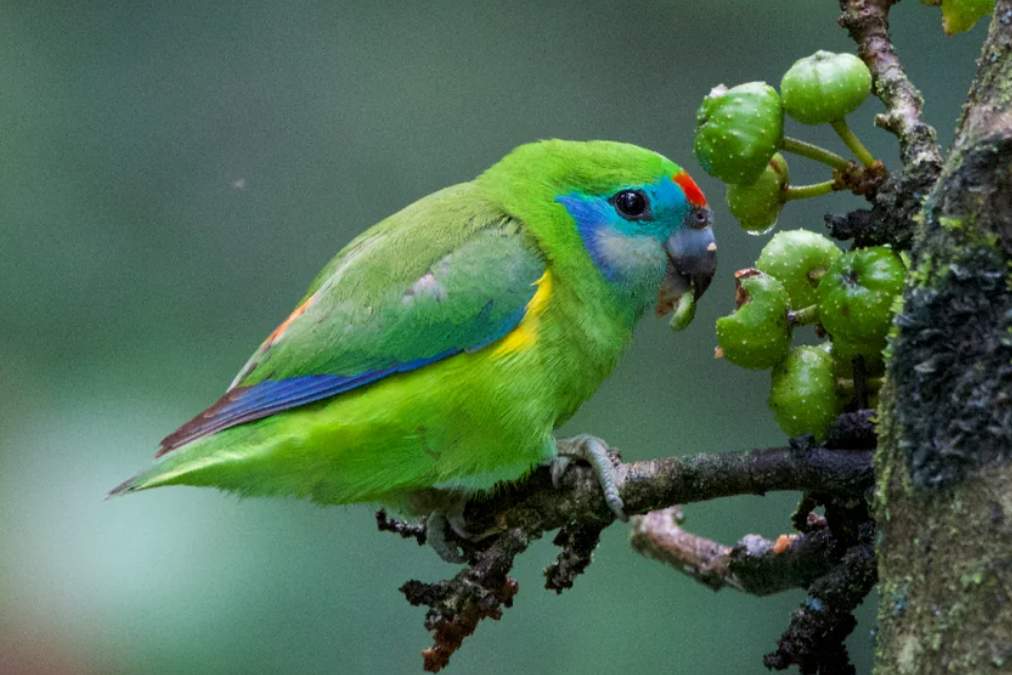The stunning Pink Cockatoo and its delicate pink tones suffusing its plumage, particularly under the wings in flight, are often called Major Mitchell. The famous explorer Sir Thomas Mitchell (1772–1855) wrote about it in glowing terms on his journey to the interior of New South Wales in 1835.
It is usually found in pairs or small groups, sometimes in the company of Galahs or Little Corellas. Large flocks of more than 100 are rare, even where pink cockatoos are common, as in Wyperfeld National Park in northwestern Victoria.
Normally, these birds will not allow observers to come close, although, if disturbed, they seldom move far and often land on the ground a short distance from where they were first seen. Pink cockatoos spend most of the day feeding on the ground or among the branches of trees and shrubs.

They eat seeds, nuts, fruits, and roots, particularly the seeds of cypress pine Callitris and acacias, which they find in the trees or on the ground beneath. In the late afternoon and early morning, they go to waterholes to drink, sometimes arriving before sunrise.
During very hot, dry weather, they return to water throughout the day. When courting, the male bird struts along a branch towards a female and, with its crest raised, bobs it’s head up and down and swishes it from side to side in a figure-eight movement.
The male utters soft chattering notes, and then the pair preen each other. Couples nest in hollow limbs of trees, entering head first and lining the bottom of the nest with wood dust and bark strips, which are removed from the entrance to their nest hole. Both parents incubate the eggs—the male during the day, the female at night—and feed the young.
After leaving the nest, the young remain with their parents to form a family group. The flight of pink cockatoos is rather staccato, with flapping wing beats alternating with gliding for brief periods like that of the sulfur-crested cockatoo.
They rarely fly high, and even when traveling long distances, they usually move in a succession of low, short flights. After alighting, they raise their forward-curving crests. Unlike the Galah, which lives in the same environment, the Pink Cockatoo has not prospered under the rural development of inland Australia.
The loss of its native food plants is probably the main cause of the decline in most of the regions. However, the trend has undoubtedly been exacerbated by trapping for the illicit bird trade. Unfortunately, pink cockatoos cannot recover their numbers as easily as other parrots, for they are aggressively territorial when breeding, not tolerating others within several kilometers of the nest site.
Pink Cockatoo is also known as Major Mitchell, Lead Beater’s Cockatoo, or Wee Juggler. The size of the Pink Cockatoo is about 360 mm in length, including a short, square-cut tail. MALE: Crown white, suffused with salmon pink. The parrot is narrow, forward-curving crest scarlet with a central band of yellow and tipped with white.
Forehead scarlet, sides of the head, nape, breast, upper belly, and underwing cover salmon-pink. The lower belly, undertail coverts, and upper parts, including the tail, are white. Undersides of flight and tail feathers were strongly washed with deep salmon pink. Their eyes are dark brown with a bone-colored bill. Feet and toes mid-grey; claws darker.
Female: Similar to male but has pale red eyes. It is a central band of yellow in the crest, broader than in males in the eastern race. IMMATURES: Similar to adults. The eyes are dull brown. Downy Young: Fine, yellow-downed. Pink Cockatoo’s usual contact call, given frequently in flight, is a two-syllable quavering screech, similar to little Corella.
But the alarm calls for three or four harsh screeches. Fledglings wheeze constantly. The breeding months are May–December, earlier in the north than the south. A nest is a hollow limb or hole in a tree, lined at the bottom with decayed wood dust and strips of bark.
Eggs: two to four, usually three; white; oval, about 39 x 30 mm. Incubation: 26–30 days, by both sexes. The baby bird fledges in about six weeks. Pink Cockatoo is intermittently distributed throughout the arid and semi-arid interior of Australia, with a major gap through the Flinders Ranges to the Simpson Desert.
It lives in sparsely timbered grasslands, scrublands, stands of cypress pines growing along sand ridges, casuarinas covering rocky outcrops, mallee, and trees surrounding cereal fields or bordering watercourses. Pink cockatoos are locally common in favored districts but generally scarce.
It is mostly observed as sedentary near good supplies of water; otherwise, it is nomadic. There are two races: one in the Murray-Darling basin, with a broad yellow band through the scarlet crest; the other in Western Australia, east to central Australia, and the Eyre Peninsula, with only faint traces of a yellow band in the crest.
Read More: Swift Parrot “Lathamus discolor”







